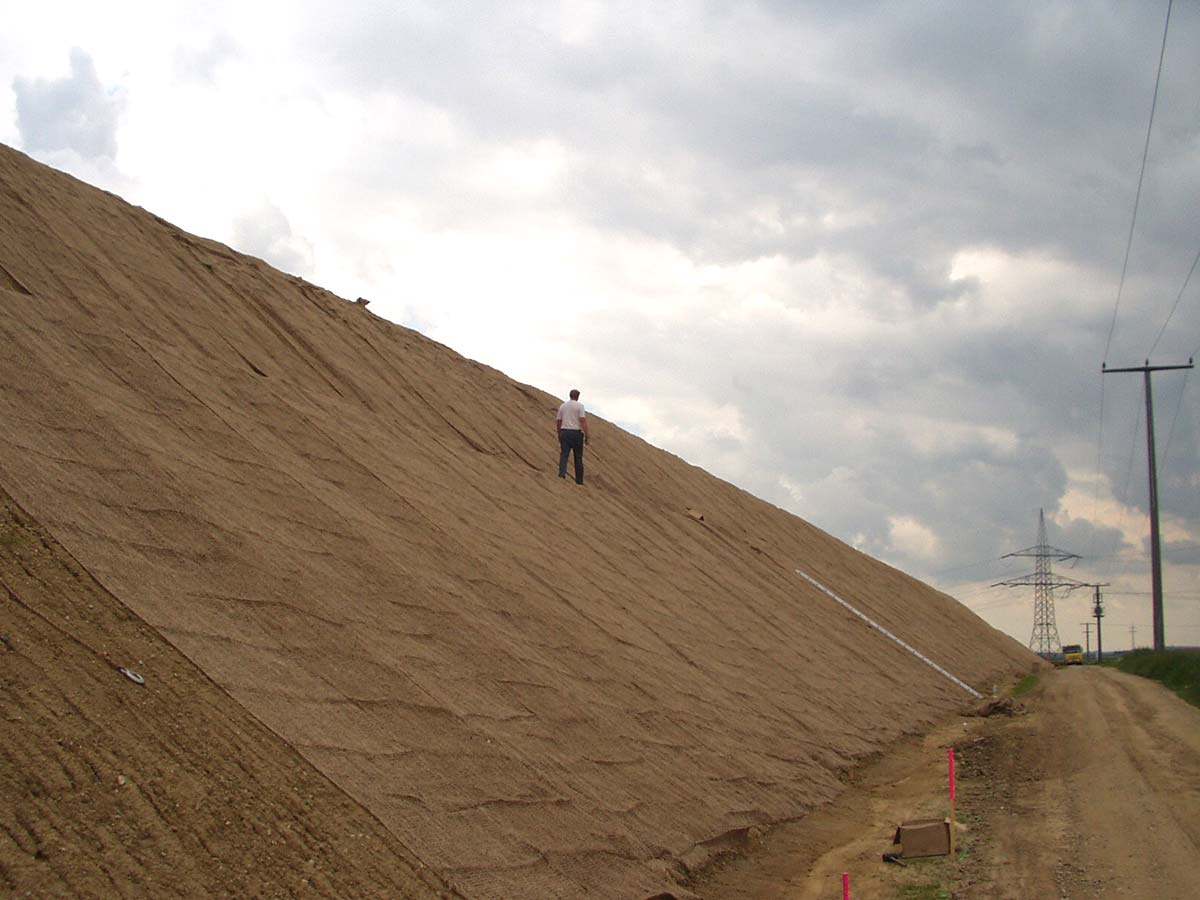- September 13, 2024
- Posted by: wellcoindustries
- Categories: Erosion Control, Jute Mesh
Introduction
Soil erosion is a common challenge for hillside properties, leading to landscape damage, environmental issues, and even property loss. One effective solution that has gained popularity is the use of jute netting for hillsides. This eco-friendly material not only prevents soil erosion but also promotes vegetation growth and stabilizes the slope. In this guide, we’ll explore what jute netting is, its benefits, various applications, and best practices for using it on hillsides.

1. Understanding Jute Netting for Hillsides
Jute netting is a biodegradable, natural fiber made from the jute plant, woven into a mesh-like structure. It is primarily used for controlling soil erosion on sloped terrains like hillsides. The netting provides a protective cover, reducing the impact of rain and wind on the soil. Over time, the jute fibers break down, allowing vegetation to grow through and stabilize the soil further.
Jute netting is effective for hillside erosion control because it acts as a physical barrier, minimizing soil displacement. The fibers absorb water, reducing runoff and allowing for better water infiltration into the soil, which is essential for vegetation growth.
2. Benefits of Using Jute Netting for Hillsides
Using jute netting for hillsides offers several advantages:
- Erosion Control: Jute netting helps prevent soil erosion by anchoring the soil in place, reducing the risk of landslides and other erosion-related damage.
- Eco-Friendly and Biodegradable: Made from natural jute fibers, the netting is biodegradable and decomposes over time, making it an environmentally friendly choice for erosion control.
- Promotes Vegetation Growth: The netting structure supports the growth of grasses and plants, which further stabilizes the soil. As the plants mature, they create a natural barrier against erosion.
- Cost-Effective Solution: Compared to other erosion control methods, jute netting is relatively inexpensive and easy to install, making it accessible for both small and large-scale projects.
3. Applications of Jute Netting on Hillsides
Jute netting is versatile and can be used in various settings:
- Residential Landscaping: Homeowners can use jute netting to protect sloped gardens or backyards, enhancing both the appearance and stability of their landscape.
- Agricultural Use: Farmers use jute netting to prevent soil erosion on sloped agricultural fields, ensuring that topsoil and nutrients remain intact for better crop production.
- Environmental Restoration Projects: Jute netting is frequently used in reforestation and wetland restoration projects to protect young plants and seeds from being washed away by rain.
- Construction Sites: Builders use jute netting on construction sites to control erosion, protect soil quality, and comply with environmental regulations.
4. How to Install Jute Netting on Hillsides: Best Practices
Proper installation of jute netting is crucial for maximizing its benefits:
- Preparing the Hillside: Clear the hillside of debris, rocks, and loose soil. Ensure the slope is smooth and free from sharp objects that could damage the netting.
- Installing Jute Netting: Unroll the jute netting from the top of the slope to the bottom. Secure it using biodegradable stakes or pins, ensuring that each edge is firmly anchored to the ground. Overlap the edges by about 6-12 inches to prevent gaps where soil could escape.
- Maintaining and Monitoring the Netting: Regularly inspect the netting for any signs of wear or displacement, especially after heavy rains. Repair or replace damaged sections promptly to maintain effective erosion control.
5. Choosing the Right Jute Netting for Your Hillside
When selecting jute netting, consider factors such as:
- Slope and Soil Type: Steeper slopes and loose soils may require heavier or double-layered netting.
- Climate Conditions: In areas with heavy rainfall or strong winds, opt for a denser weave to provide better protection.
- Types of Jute Netting: There are various types, including single and double jute netting. Single-layer netting is suitable for mild slopes, while double-layer netting offers more durability for steeper terrains.
Conclusion
Jute netting for hillsides is an effective, eco-friendly solution for controlling soil erosion and promoting vegetation growth. Its versatility makes it suitable for a range of applications, from residential landscaping to large-scale environmental projects. By following best practices for installation and maintenance, you can ensure that your hillside remains stable and healthy. Consider jute netting for your next erosion control project to achieve sustainable and long-lasting results.
Ready to protect your hillside with jute netting? Explore our wide range of eco-friendly jute netting options and start your erosion control journey today!
